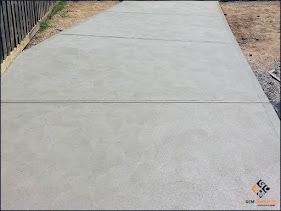What is Reinforced Concrete?
Traditional cement concrete is combined with reinforcements (steel bar) to create reinforced concrete. This combination uses the tensile strength of steel and the compressive strength of concrete at the same time to resist a variety of loading. The word "reinforced" is used because the steel strengthens the concrete and gives it additional reinforcement.
This material for construction needs to be carefully engineered. If the concrete is not sufficiently strengthened, it may be unstable and prone to failure. Reinforced concrete has a lot of benefits, but it also has some drawbacks. Reinforced concrete offers potential for creative and aesthetically appealing design because it can be molded and shaped in ways that other materials cannot.
Due to its high strength, ease of use, adaptability, versatility, durability, and affordability, reinforced concrete is a widely used building material. It is frequently used to build anything from building foundations to roofs, as well as precast buildings, floating structures, hydropower tunnels, irrigation canals, sewers, and many other types of constructions that can be imagined.
1. Strength
The strength of reinforced concrete is excellent both in tension and compression. Because of this, concrete is a popular building material.
2. Economical
Concrete components are commonly accessible and reasonably priced worldwide. Concrete is also produced at a very low cost. Utilizing reinforced concrete has a positive economic impact because it requires little maintenance because of how durable it is.
Reinforced concrete construction reduces running costs associated with operational energy consumption, maintenance, and disaster recovery through durability, resilience, reduced maintenance requirements, and energy efficiency.
3. Versatility
On a construction site, concrete can be poured into different shuttering or formwork configurations to create the necessary shapes, forms, surfaces, textures, and sizes. This is due to the fact that newly laid concrete is liquid and flowable. It is therefore better suited to architectural requirements.
4. Durability
If correctly constructed and installed, reinforced concrete structures are long-lasting. The material can endure up to 100 years and is not influenced by weather conditions like snow and rain.
Concrete can withstand chemicals dissolved in water including sulfates, chloride, and carbon dioxide that may induce corrosion in concrete without suffering significant damage thanks to its low permeability.
Because of this, reinforced concrete is perfect for applications that need submerged or underwater construction, such as pipelines, dams, canal linings, and building structures.
5. Resistance to Fire
Concrete cannot burn or catch fire due to its nature. It can endure heat for 2 to 6 hours, giving rescue efforts enough time in the event of a fire. Compared to other frequently used building materials like steel and wood, reinforced concrete structures are more fire resistant. It can be utilized with fireproof steel and in blast and high temperature applications.
6. Ductility
The reinforced concrete constructions gain ductility from the steel reinforcement. If a reinforced concrete member is overloaded, ductility allows concrete to display signs of distress like cracking and deflection. Engineers can then think of appropriate ways to stop additional concrete deterioration.
7. Earthquake resistance
Structures made of reinforced concrete that have been properly built are particularly earthquake resistant.
8. Effortless Construction
For the construction of a structure made of reinforced concrete rather than steel, less specialized labor is needed.
9. Consumption and Waste Recycling Capability
Many industrial wastes and byproducts, including fly ash, slag, waste glass, and even ground tires from vehicles, can be recycled to replace cement, aggregate, or supplementary materials. Slag is also referred to as GGBFS or ground granulated blast-furnace slag. Concrete manufacture therefore lessens the environmental effects of industrial waste, enhances the properties of concrete, and maintains the structural quality.
Concrete can be recycled as aggregate for use in gabion walls, riprap to protect shorelines, other applications, or as granular material, reducing the amount of waste that needs to be landfilled and the demand for new materials in construction.
10. Application in Multiple Modes
Concrete has many benefits, one of which is its versatility in terms of application methods. Concrete is applied by hand, poured, pumped, sprayed, grouted, and used in more complex projects like shotcrete and tunnels.



Comments
Post a Comment